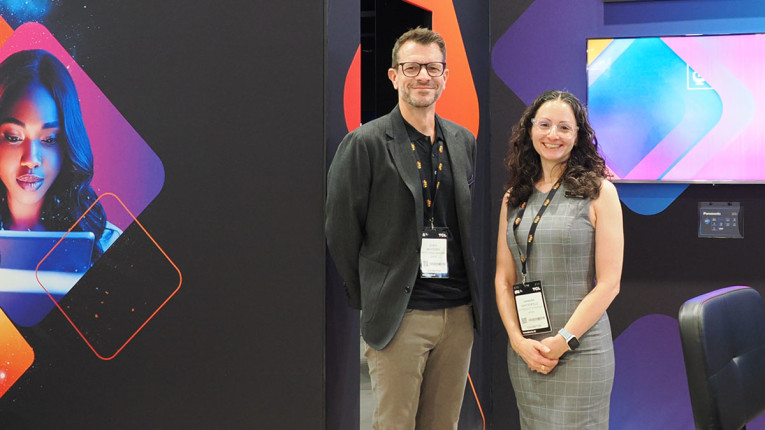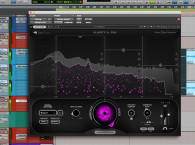
DTS Clear Dialogue is a new processing solution to improve dialogue intelligibility for TV audio, delivering a more engaging and personalized audio experience for consumers at home. The motivation is to address one of the biggest and recurring audio complaints from consumers — not being able to clearly understand spoken onscreen dialogue. There are many reasons why consumers have difficulty understanding onscreen dialogue: device limitations, inconsistent audio across content sources, environmental noise or individual hearing abilities.
A recent Xperi survey of 1,200 US adults revealed that 84% of consumers have experienced trouble understanding dialogue during TV shows and movies. In response, over three-quarters (77%) of survey respondents said they use captions/subtitles, with one in three (30%) reporting they are always or often turned on.
DTS and other Xperi subsidiaries are very familiar with the problem, having proposed solutions to address improvements at the source, many of which are currently in use in content production and distribution. But the variability of the home viewing experience is one of the biggest challenges when it comes to intelligibility. As an embedded solution that runs on the same hardware prominently used for image and video processing in modern TVs, DTS Clear Dialogue provides consumers with the ability to personalize and optimize their audio experience, significantly improving their understanding of dialogue.
Unlike solutions that are available as part of broadcast standards or digital distribution formats, tackling the problem directly on the end user device means also the ability to maintain a consistent experience no matter the source. Particularly, given that homes receive their content from a growing variety of streaming services and aggregated services. Also, even though sound quality is considered highly important to a strong majority of viewers questioned in consumer surveys, the reality is that many homes rely only on the speakers that are integrated in the increasingly thinner TV displays. The TV sound systems provided in those displays already make use of DSP to compensate for the narrow frequency range, lack of bass, and for loudness management that is intended to deliver perceived higher volumes without increasing distortion.

“When viewers can’t hear the dialogue, it degrades the quality of their TV experience and turning on subtitles is a workaround, not a solution,” says Geir Skaaden, chief products & services officer at Xperi. “To date, attempts to mitigate audio post-processing limitations don’t address the complex underlying problems across languages, content and environment, and can’t account for each viewer’s individuality. Our device-side AI-based audio processing solution will allow TV OEMs to provide their viewers with the ability to customize and personalize their audio experience.”
audioXpress attended the demonstration that Xperi promoted at IFA Berlin 2024, and we can confirm that the solution is extremely effective in its core objective - to improve dialogue intelligibility directly from TV sound and independently of the volume. The solution can be implemented with a streamlined user interface that is effective and intuitive, while preserving the basic content integrity - in a movie soundtrack, as an example. This was attempted before by multiple DSP providers that supply the TV OEMs, using standard dynamic processing techniques. But fixed dynamic processing as proven inadequate for the large variety of content sources and formats, delivered by integrated receivers and different input devices connected to the TVs.
DTS Clear Dialogue leverages AI audio processing innovation and machine learning techniques to identify, separate and enhance dialogue so listeners can better understand it. It does so directly to the content being watched following the basic user-defined preferences and adjusting the processing dynamically as required. With audio separation at the source, DTS Clear Dialogue is able to improve intelligibility without affecting the remaining content material. Also, Clear Dialogue is language-inclusive and agnostic to content type (movies, TV shows, sports, live events, etc.).
A significant 79% of U.S. consumers, surveyed by Xperi, said that DTS Clear Dialogue would increase their interest in a smart TV that offered it. Top use cases include when actors do not speak clearly (40%); non-dialogue audio elements are too loud (38%); viewers want to watch at a lower overall volume to avoid disturbing others (35%); and the TV-watching environment is too noisy (34%).
DTS Clear Dialogue for TV OEMs can identify and separate virtually any element within an audio program to optimize its performance — distinguishing between elements such as dialogue, music and special effects. Once the dialogue has been separated, it can be processed with minimal consequence for the original artistic intent. It also gives users control to create personalized profiles with dialogue and non-dialogue settings, to address hearing impairment, listening environments and audio preferences for varying conditions.
www.dts.com
www.xperi.com










